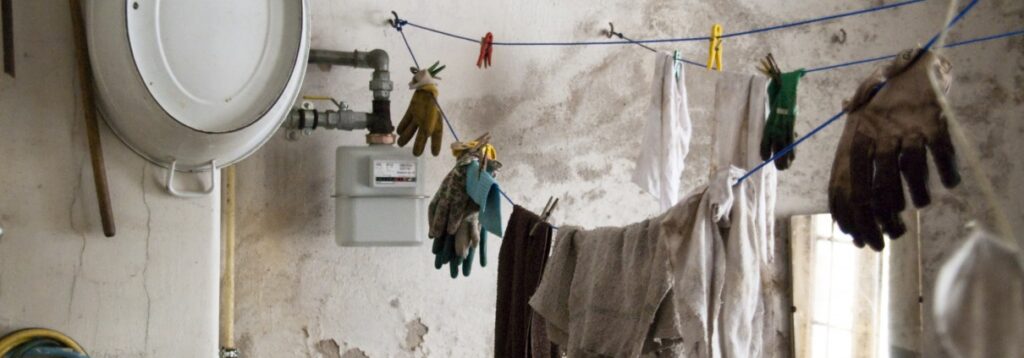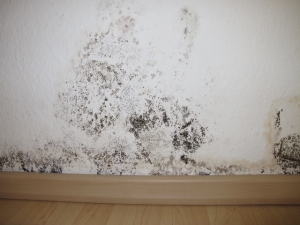Best Mold Removers
Keeping your home and yard mold-free is crucial. Not only is mold unsightly, but it can cause health issues for your family, ranging from upper respiratory tract issues and to the development of asthma. Investing in a good mold cleaner will not only keep your home pristine and mold-free, but it will also prevent your household from exposure to harsh bacterias.
Whether you’re searching for a powerful remover for stubborn bathroom mold stains, or wish to banish mold off of fabric, we’ve researched the top mold removers to get the job done.
Customers sing the praises of this mold and mildew stain remover from RMR-86. It works on nearly any surface, including wood, fiberglass, concrete, and tile, and it promises to remove unsightly stains in 15 seconds, without the need for any scrubbing except in the case of the toughest stains. It’s a bleach-based cleaner, and it promises to be five times stronger than other brands.
If you don’t have proper ventilation in your bathroom, excess moisture can lead to mold growth in your shower. To remove (and prevent) the buildup of mold and mildew, the Kaboom Mold & Mildew Stain Remover will get deep into the cracks and crevices for a deep clean that will last. It’s a foam, so it doesn’t run down the walls like some liquid versions, and the thick formula is easy to apply thanks to the precise applicator tip.
To use, apply it to a dry area, let it cling to the surface, and then wipe it off after stains appear to have faded. For tough stains, you may need to repeat this process and wait a bit longer before wiping it off. Keep in mind that the formula is strong, so you’ll need to wear rubber gloves and work in a well-ventilated area. Customers say they can see results almost immediately after wiping the product off.
Not all mold removers are safe for wood, but this one from Concrobium is made for the wood jobs inside and outside your home. Beyond wood, it can be used on concrete, drywall, shingles, siding, and grout. It doesn’t contain any bleach or other toxic chemicals but instead uses a different method. The bottle claims that it “crushes and suffocates mold as the product dries out.”

How to Clean Mold Off Wood
Mold and mildew spores are all around us. Add some heat and humidity, and a colony of fungus will begin to grow on fabrics, shoes, walls, bathroom grout, and bare or painted wood.
The most common type of mold found in homes is mildew. Mildew is a surface mold that grows in warm, damp places like basements, laundry rooms, and shady porches. Mildew begins as a gray or white powdery colony and eventually turns black or brown. To test if the wood is covered with mildew or just dirt, dab the stain with a cotton swab dipped in household chlorine bleach. If the stain lightens or disappears after two or three minutes, it’s mildew. If not, it’s probably just dirt.
Mildew can discolor and slowly harm wood surfaces but there are much more dangerous molds that can damage the structure of your home. If a fuzzy or slimy black or green mold is visible and the drywall or wood underneath is soft or crumbles, there is irreversible rot and the damaged surfaces must be removed immediately
How do you determine if you need to hire a professional? If the infestation on wooden surfaces is not black mold and is caught early, you should be able to remove it with household cleaners. For extensive mold problems in poorly ventilated areas like crawlspaces or for anyone with mold allergies or compromised respiratory systems, consider hiring a professional.
How Often to Clean Mold Off Wood
At the first sign of mildew or mold, wooden surfaces should be cleaned immediately. For outdoor wood furniture, decks, and siding in humid climates, at least yearly cleanings with a mildewcide is recommended
How to Clean Mold Off Wood
Before you begin this project, be sure to wear a mask, long-sleeved shirt, and long pants to protect yourself. If possible take the mold-infested wood outside when cleaning to prevent spreading spores to other areas. For interior walls and floors, close doors or use plastic sheeting to shield other areas.

How We Do Proper Mold Remediation
Mold is an important issue and there are two important things to remember about: it needs to be prevented by doing things right the first time, and when mold is showing – it needs to be taken care of immediately
Steps to Mold Remediation
1: We know moisture
Assessing mold growth involves more than just looking at what is visibly growing on the walls or in a corner. Mold can be an invisible intruder, growing behind and around what you first see. Such devious behavior requires inquisitive thinking.
2. We document the mold problem and create a remediation plan
Before we begin remediation, a team member documents the mold situation with writing, photos and video. The team supervisor will use this documentation to develop a remediation plan. This will answer questions like when work is slated to begin, when that work is scheduled to be completed, who will be performing the remediation, any testing that should be done, and if homeowners will be temporarily relocated.
We calculate the extent of the contamination
Mold may not always grow in one area and we access how much contamination there is. By calculating the extent of the contamination we determine how to approach mold removal and cleanup. The goal of mold remediation is to clean up mold growing within the home, and to avoid exposing homeowners to large amounts of mold.
We remediate mold contamination
Remediation always involves cleaning up existing mold while avoiding exposure to oneself as well as homeowners. We also prevent new growth by addressing the moisture source. Based on calculations of the contamination area, we determine the area we will be working in. Some examples of steps we take to take care of the mold:
Repair the water problem. This will help prevent new mold spores from growing.
Isolate the contaminated area. Close all doors and windows between the contaminated area and other rooms of the home
Suppress dust caused by mold spores in the home.
Remove all wet and mold-damaged porous materials.
Place materials in plastic bags.
All non-porous materials and wood surfaces that are moldy are cleaned.
Perform visibility test – all areas should be visibly free of contamination and debris — no dust and dirt means no mold.
Cleaned materials should be dried to allow leftover moisture to evaporate. To speed up the drying process, we use fans, dehumidifiers or raise the indoor air temperature.
All materials that were moved are replaced or repaired.
DEFINITION OF MOLD CLEANING VS. MOLD REMOVAL AND MOLD REMEDIATION
It seems strange (and amazing) that mold can be found in so many houses; creating the need for remediation and cleaning. Many types of mold are generally harmless and don’t seem to cause many troubles. But mold removal, officially called mold remediation, can become your obsession when allergies or continuous sinus problems plague you.
In most cases, a person notices some discoloration on a wall or baseboard. It may look like a random, old mold stain. If there is no connection between respiratory complications, illness, headaches, most just ignore it. A better idea might be to consider calling a mold cleaning company for another opinion. After all, there may be nothing more than discoloration visible on the surface but what lurks below could be something far worse than a stain. Cleaning the visible side of a wall surface may not deliver true mold removal.
Even after mold remediation, in some cases, a visible difference in color remains between mold-affected areas and those unaffected by mold. Sometimes dark or even black stains may still be noticeable. The area can be free of mold (due to mold remediation) yet remain visibly stained. This is where mold cleaning comes in.
Not to complicate the matter, but to add some clarity to the issue of mold, mold spores are dangerous. They are dangerous whether alive or dead. So mold removal is different than mold cleaning. Oftentimes, mold spores can be removed quite easily from surfaces. But a stain can remain. An all-inclusive mold remediation and stain removal should be performed to insure a safe, indoor air environment.
STOP franchises across the country are often called in for mold cleaning after mold has been removed. There are products and methods to help remove these stains. In some instances however, sealing and painting (or other finish application) may be necessary to achieve uniform appearance.
MOLD REMEDIATION
Removing mold from a property is more than just an unpleasant chore; it can be dangerous. So, it’s important to have a professional in your corner who can do the dirty work.
While some mold is easy to see, there are times—when mold is hidden in basement crawl spaces or inside walls, for example—when homeowners may have a difficult time identifying the problem. Here are a few signs that might indicate the presence of mold:
Visible mold growth, whether white, black, brown, or green
Musty or moldy smell
Wallpaper that is peeling, bubbling, or becoming discolored
Allergic reactions such as sneezing, coughing, nasal congestion, or sore eyes
There are several potential causes of mold, including
Humidity
Poor ventilation
Undetected leaks
Flooding
In the right environment, mold can spread quickly. That makes speed absolutely crucial when it comes to eliminating the source of the issue and restoring your property to its former state.
Professional mold remediation services ensure that your damaged house or property gets the best possible treatment. With expert teams using hi-tech equipment to identify the problematic areas, extract and remove the mold, and restore the damage done to your home, you don’t have to worry – it is all done for you.
The Mold Remediation Process
There are a number of steps in the restoration process that will vary depending on the damage done to your property.
Inspection
The mold cleanup and restoration process begins when you call Services. We’ll ask you a series of questions to help determine the necessary equipment, resources, and personnel needed to safely and efficiently handle the issue. Next, we’ll carefully inspect your property for visible signs of mold and provide you with a free estimate.
Mold Containment and Removal
Services uses various technologies to remove mold and hidden water sources. First, all fans and heating and cooling systems will be turned off to prevent the spread of mold. Next, our trained technicians will use various containment procedures and technology, such as negative air chambers, negative air pressure, powerful air scrubbers, and HEPA vacuums to isolate the contaminated area with physical barriers and keep the mold spores from spreading during the cleanup process.
Cleaning and Repairs
We don’t do things halfway here—Pur Services can even clean your furniture, decorative items, curtains, clothing, and other restorable possessions affected by mold! Our technicians are trained to remove odors and deodorize, allowing you to enjoy a home that once again smells as it should. Your restoration may also involve minor repairs such as replacing drywall, painting, and installing new carpet. The most severe cases may require major repairs or reconstruction of certain areas